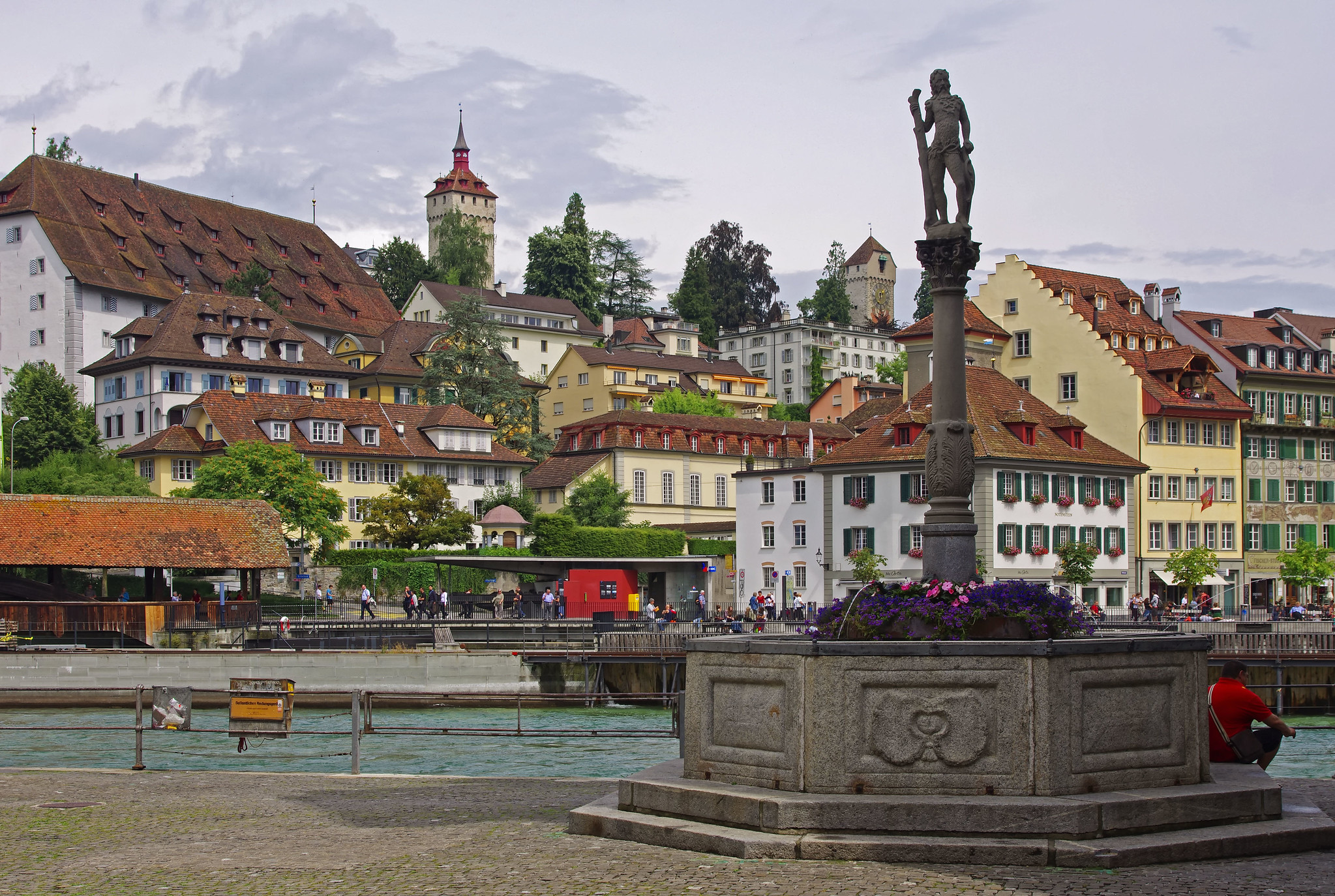Nestled in the heart of Switzerland, Old Town Lucerne is a captivating blend of medieval architecture, rich history, and picturesque charm. As you wander through its winding cobblestone streets, you’ll find yourself transported back in time, surrounded by well-preserved buildings that have stood the test of centuries.
The moment you step foot in Old Town, you’re greeted by the sight of colorful facades adorned with intricate frescoes and ornate bay windows. These buildings, some dating back to the 14th century, tell the story of Lucerne’s prosperous past as a major trade hub. As you stroll along, you’ll notice that many of the structures still bear the names and symbols of the guilds that once occupied them, offering a glimpse into the town’s vibrant medieval economy.
One of the most striking features of Old Town Lucerne is the network of covered wooden bridges that span the Reuss River. The most famous of these is the Chapel Bridge, or Kapellbrücke, which has become an iconic symbol of the city. Built in the 14th century, this bridge is not only a vital pedestrian crossing but also a living museum, with its interior adorned with 17th-century paintings depicting scenes from Swiss and local history. As you cross the bridge, take a moment to admire the octagonal Water Tower that stands alongside it, once used as a prison, torture chamber, and treasury.
As you continue your exploration, you’ll come across numerous fountains scattered throughout Old Town. These aren’t just decorative elements; they played a crucial role in the daily lives of medieval residents, providing fresh water for drinking and washing. Today, they serve as charming meeting points and photo opportunities for visitors.
The heart of Old Town is the Weinmarkt, or Wine Market square. This bustling plaza was once the center of Lucerne’s wine trade and is now surrounded by beautifully painted buildings. Keep an eye out for the ornate Pfistern guildhall, with its colorful frescoes depicting scenes from daily life in medieval Lucerne.
As you meander through the narrow alleys, you’ll stumble upon hidden gems like the Spreuer Bridge, another covered wooden bridge featuring a series of paintings known as the Dance of Death. These macabre yet fascinating artworks serve as a reminder of the fragility of life and were particularly poignant in a time when plagues were a constant threat.
No visit to Old Town Lucerne is complete without a stop at the Jesuit Church, a stunning example of early Baroque architecture. Its pristine white exterior and ornate interior make it a standout among the medieval buildings surrounding it.
As the day winds down, make your way to the old city walls, known as the Musegg Wall. This well-preserved fortification offers panoramic views of the city, lake, and surrounding mountains. Climb one of the nine towers for an even more spectacular vantage point.
As night falls, Old Town Lucerne takes on a magical quality. The streets are softly lit, casting a warm glow on the ancient buildings and creating an atmosphere that’s both romantic and mysterious. It’s the perfect time to find a cozy restaurant or bar tucked away in one of the many historic buildings and reflect on the day’s discoveries.
Old Town Lucerne is more than just a collection of well-preserved buildings; it’s a living, breathing testament to Switzerland’s rich history and cultural heritage. As you explore its cobblestone streets, you’re not just walking through a museum, but experiencing a piece of living history that continues to enchant visitors from around the world.
Old Town Lucerne stands as a beautifully preserved testament to Switzerland’s rich history and cultural heritage. Its well-maintained medieval architecture, iconic landmarks like the Chapel Bridge and Water Tower, and charming cobblestone streets create an enchanting atmosphere that transports visitors back in time. The area’s blend of historical significance, artistic treasures, and modern amenities make it a must-visit destination for tourists and a source of pride for locals. Old Town Lucerne’s enduring appeal lies in its ability to seamlessly merge the past with the present, offering a unique and memorable experience that captures the essence of Swiss urban life through the centuries.

